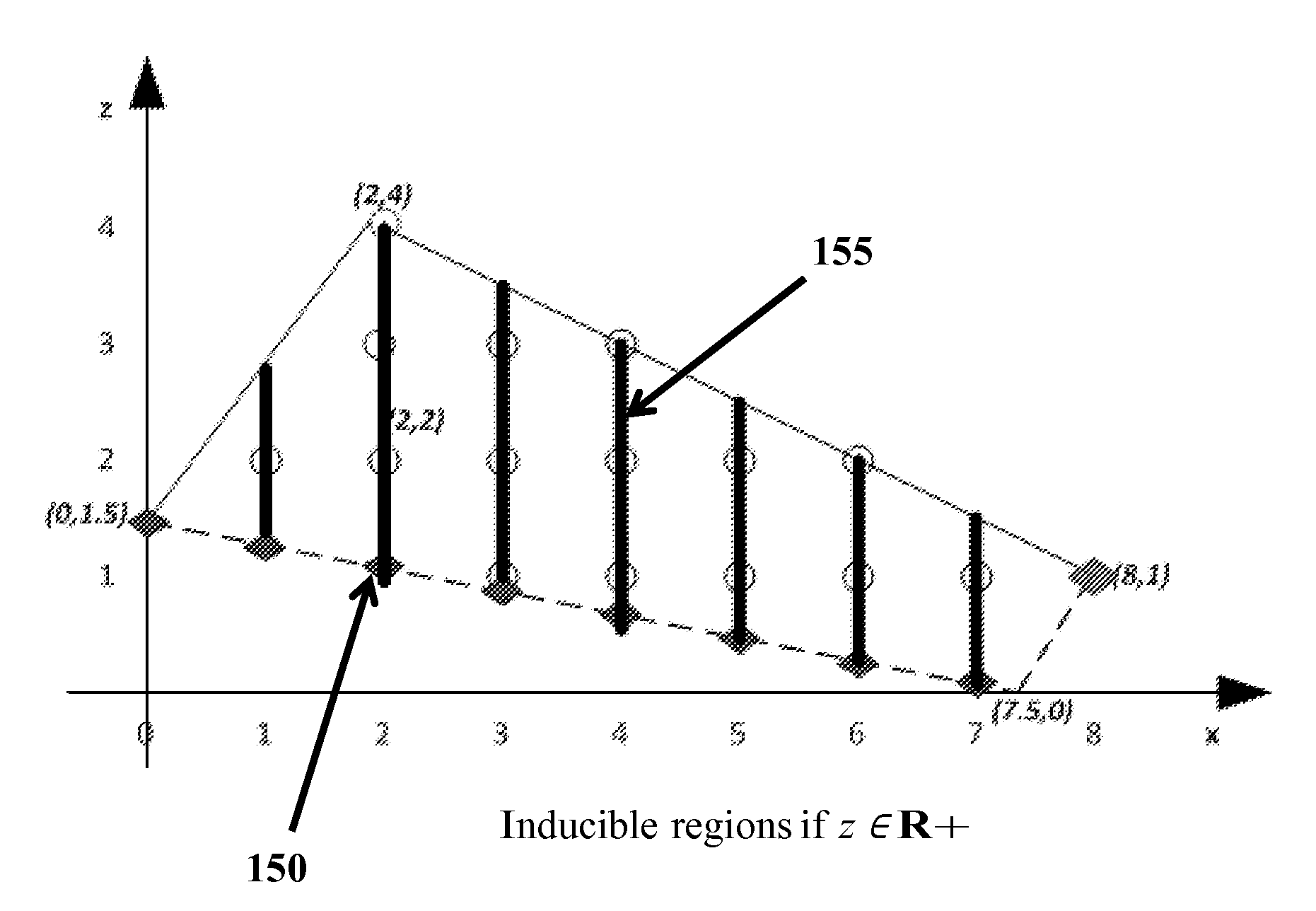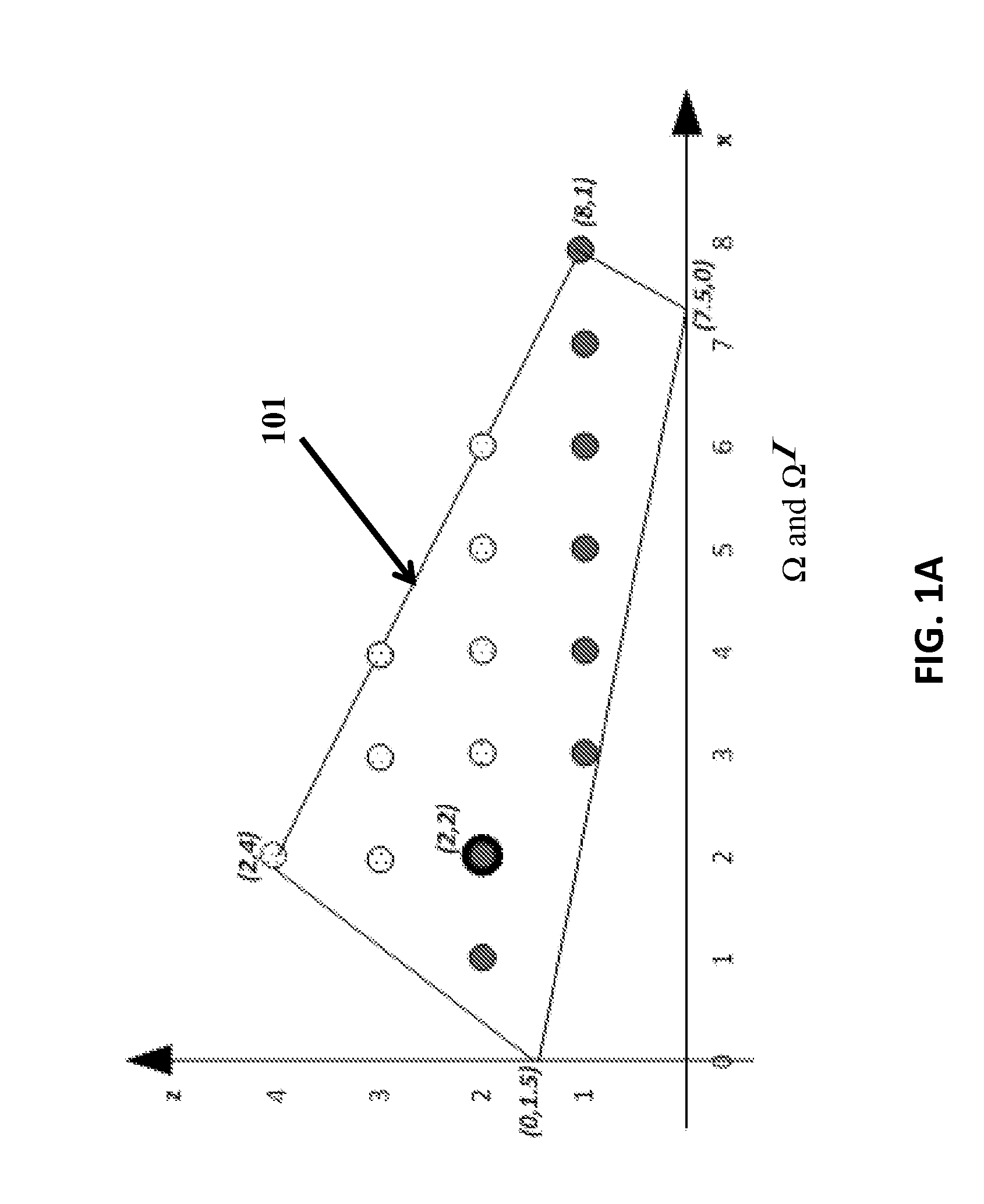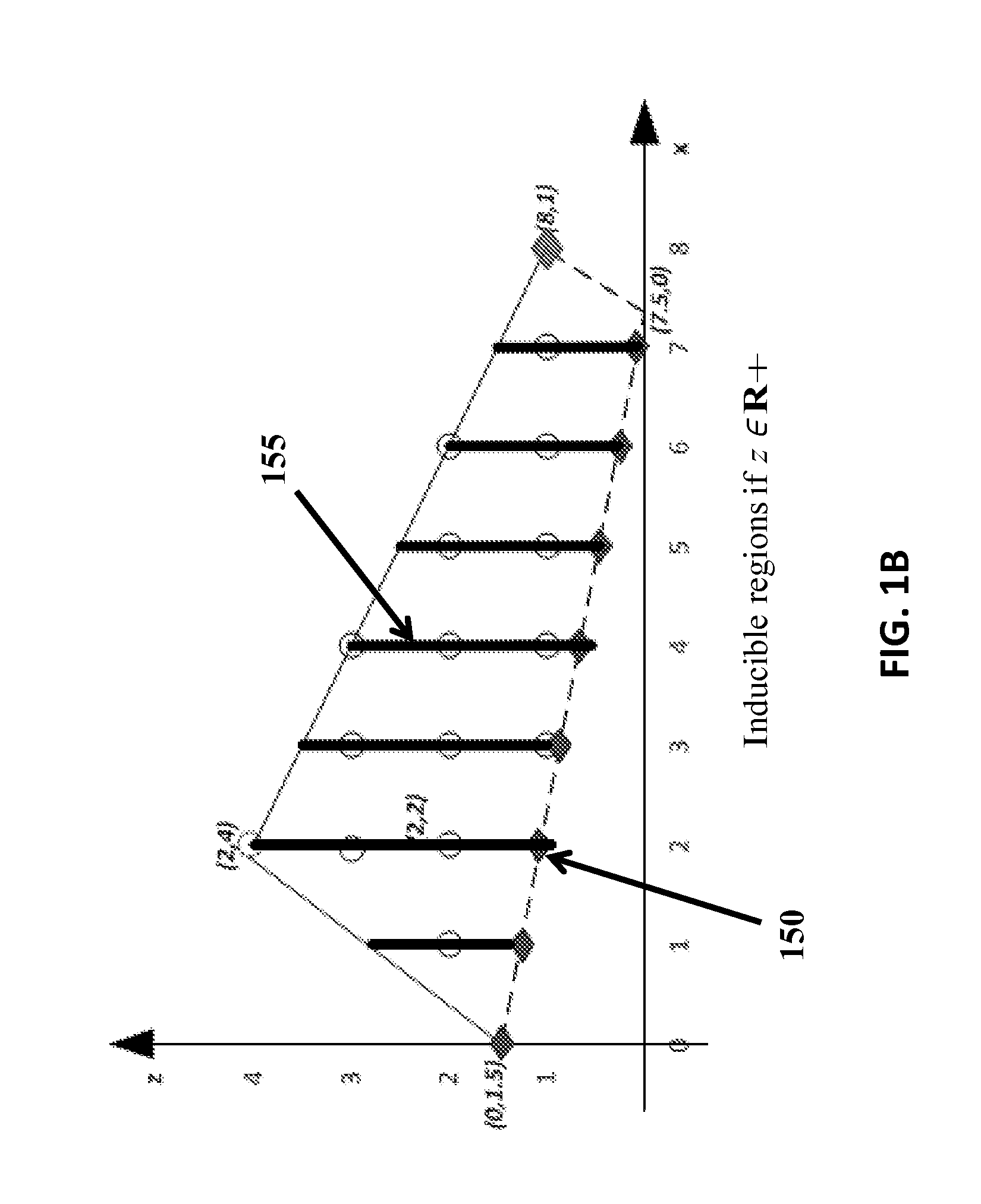Methods and systems for computation of bilevel mixed integer programming problems
a mixed integer and programming problem technology, applied in the field of methods and systems for computing bilevel mixed integer programming problems, can solve problems such as difficult implementation of complex operations, problem specific and challenging for most researchers and practitioners, and inability to compute existing methods, etc., to achieve the effect of improving computational efficiency, improving processing capability and performance, and being insufficient or useful
- Summary
- Abstract
- Description
- Claims
- Application Information
AI Technical Summary
Benefits of technology
Problems solved by technology
Method used
Image
Examples
example 1
[0159]A computational study was conducted to show / compare the effectiveness of certain techniques of the subject invention. The study evaluates random bilevel MIP instances. The computational study is made through C++ on a PC desktop (with a single processor at 3 GHz and 3.25 Gb memory) in accordance with system 400. The optimality tolerance of the master problem was set to 0.5%, and those of subproblems to 0.1%, and the computational time limit to 3,600 seconds.
[0160]Random instances were generated according to following specifications: (1) All instances have 20 integer variables in total. Those integer variables are split for the upper-level DM and the lower-level DM using two combinations, i.e., 15+5 and 10+10.
[0161](2) Three types of instances are included: a) Upper-level variables, i.e., x, are binary. The lower-level problem has 5 continuous variables. b) Upper-level variables are nonnegative integer variables (bounded by 30). The lower-level problem has 5 continuous variables...
PUM
 Login to View More
Login to View More Abstract
Description
Claims
Application Information
 Login to View More
Login to View More - R&D
- Intellectual Property
- Life Sciences
- Materials
- Tech Scout
- Unparalleled Data Quality
- Higher Quality Content
- 60% Fewer Hallucinations
Browse by: Latest US Patents, China's latest patents, Technical Efficacy Thesaurus, Application Domain, Technology Topic, Popular Technical Reports.
© 2025 PatSnap. All rights reserved.Legal|Privacy policy|Modern Slavery Act Transparency Statement|Sitemap|About US| Contact US: help@patsnap.com



